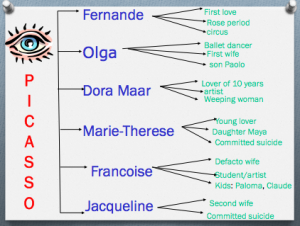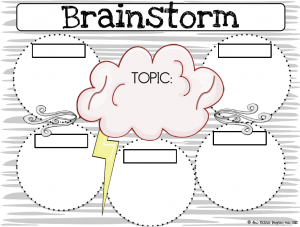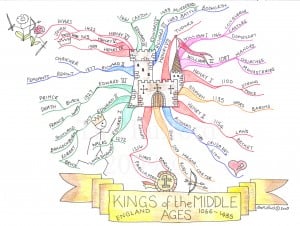Brainstorms and Mind maps
To get the learning juices flowing, your child may benefit from creating brainstorms about the topic. Brainstorms are different from mind maps because they allow all thoughts to be recorded and then organised later. Mind mapping links ideas which are relevant to the topic being explored. These activities engage the whole brain. The brainstorm starts with a key word in the centre and ideas that spring to mind are arranged as seen below. This can be done as a group activity or individually.
Whatever comes to mind should be written down and discarded afterwards if irrelevant. It can also include visuals. The child then has some simple ideas which can be taken to the next step. One example could be forming simple sentences with the words so as to extend the meaning and relevance of the keyword. The chart could be used as a study reference at a later date.
This brainstorm could also be extended into a more complicated thought process which I like to refer to as the mind map. Here ideas are linked and expanded upon as needed. This promotes deeper thinking.
Mind mapping is an extremely effective way of note taking especially for visual learners who like to be creative. They can easily be transferred onto the back of the ‘dunny’ door or onto small cue cards for review when travelling to and from school.
Another innovative way of taking notes is to place them horizontally instead of vertically. I first saw this at a study seminar held at my school and decided to test it out on my students. This is most effective for many left ‘brainers’, although it works for others too.
Our brain can recall knowledge more easily when it is placed in a similar pattern to the way we read and write – that is, left to right. Our brain can easily recall around four to five major points running down the page, but a myriad of facts when written across the page. Let me explain:
If your child was asked (and I hope this does not occur often) to summarise Chapter 3 of their Science text book:
Firstly I would recommend that they are immediately provided with a highlighter pen and pencil! Children should be encouraged to highlight only key words NOT whole slabs of information. Then I would encourage them as they read each section to take notes like this:
 Major Fact ( up to 5-6 max going down the page – across filling in minor details about major facts can go as long as is necessary, without going overboard). The child can colour code the facts so that major facts may be red while minor ones may be blue then green. This will assist the brain in differentiating between major and minor facts on recall.
Major Fact ( up to 5-6 max going down the page – across filling in minor details about major facts can go as long as is necessary, without going overboard). The child can colour code the facts so that major facts may be red while minor ones may be blue then green. This will assist the brain in differentiating between major and minor facts on recall.
If your child prefers the computer, one of the best on line apps for brainstorming and mind mapping is PADLET.
Another app I recommend for assisting with thinking is Tools 4 Students and at only $1.29 it’s worth every cent!
Thanks for reading 🙂



